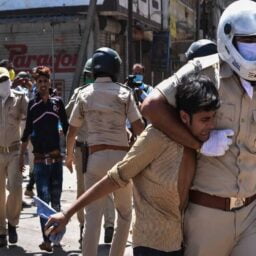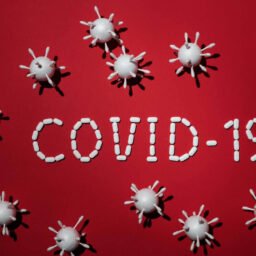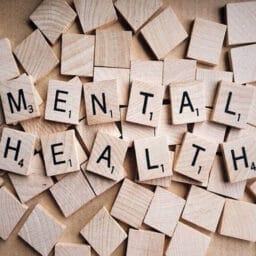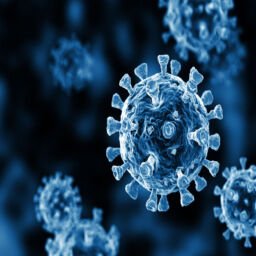
INTRODUCTION
“Words are singularly the most powerful force available to humanity. We can choose to use this force constructively with words of encouragement, or destructively using words of despair. Words have energy and power with the ability to help, to heal, to hinder, to hurt, to harm, to humiliate, and to humble.”
– Yehuda Berg
This statement reverberates the fact that we need a good communication system and with the pandemic far from over yet, we need this effectiveness to be maintained. As we know that a new variant of the virus is doing rounds in Britain with a possible chance of its spread to the Indian Subcontinent through the Air route, it hardly leaves doubt in our minds that the process of developing resilience has to be maintained without leaving any effort.
We know how deep an impact can just a few words have. Miscommunication can lead to the endangerment of a lot of lives and that’s why a fool-proof and effective medium is a must. That’s why we must remember and keep repeating what we have learned from our experiences and this Article tries to justify and give the same knowledge a definite structure.
THE WHY’S AND THE HOW’S
In the words of James Thurber, “Precision of communication is important, more important than ever, in our era of hair-trigger balances, when a false or misunderstood word may create as much disaster as a sudden thoughtless act.”
Interconnectivity between systems remains one of those features that help in determining and better structuring the global world, which is constantly evolving dynamically. It is something which consists of huge benefits. An instinctive reaction to a pandemic of such sorts could’ve been a total shutdown of our connectedness but Gladly, it wasn’t so. Emphasis was put on systems that are designed to lay the groundwork of adaption and recovery as and when something happens that affects our society.
The scale on which the Pandemic affected us and how the govt. responded to the same and are matched by the enormous flow of info about the pandemic broadly in terms of a Twenty-Four Seven news coverage, Press conferences being televised as well as other types of analyses of the news in the mainstream. This neck-break speed of the flow of health information and views on the COVID-19 is unprecedented and is in quite some variations. While people of the older generation prefer news through national news channels or newspapers, the younger generations today prefer info through the latest and comparatively nascent channels like Facebook, YouTube, or Insta. The people like migrants and other refugees can be reached effectively through Leaders of their communities or local news channels from their origin countries.
Poor health of media literacy is nearly seen everywhere, and similarly, a gap in the scientific know-hows has given a jolt to our responses to the Coronavirus. There has been a surge of unverified info spreading and creates an atmosphere of distrust and fear. If we are preparing for the ever-present danger of COVID’s resurgence or some new infectious disease like that to happen then some proactive investments in public health are needed. A special emphasis should be there on specific factors, like how is there an intermingling of such viral agents and how are there interactions with surroundings and transfer of them in even confined environments. When there prevails a sense of uncertainty, then strategies for forming effective communicative channels is a must.
CHALLENGES
Recent decades have emphasized getting efficiency in tasks, works, and various other ways we manage various social and economic systems. As things stand, much of the global world scenario leans on complex interconnected systems to provide and transfer their goods and services. While this may possess considerable opportunities, this leaves a chance for a sudden system collapse. That’s why building resilience is the focus of specific answers we need for fixing different systems, like for instance health systems of the military. But, Sometimes there are risks like facing consequences in our attempt to maximize the efficiency, we in turn cause it to work at suboptimal efficiency levels at the higher stages.
Effective communication is proactive, polite, imaginative, innovative, creative, constructive, professional, progressive, energetic, enabling, transparent, and technology-friendly. But the story doesn’t go this easily and as planned and multiple factors affect this ability in social and cultural ways. A person’s gender, contrasts in generational values, inclination towards a particular language, various religious beliefs, and varying influence through the medium of literature affects the action of the masses. The presence of counseling and vaccinations has a huge effect on desperate individuals as it encourages organizations and the individuals themselves to take actions and perform acts during an epidemic that may be inconsistent with their medical principles and practices. People who have to work regularly with limited finances may also have difficulty following instructions to remain at home.
SOLUTIONS
In the words of Tony Robbins, “To effectively communicate, we must realize that we are all different in the way we perceive the world and use this understanding as a guide to our communication with others.”
What we can continue to look out for-
Everything in pandemic circles around having effective means of communication. This makes it very important to not make any mistakes in the process of communication. This includes not sending mixed or late messages, paternalism, ignoring rumors or myths, power struggles between governments, unrealistic expectations, scientific terms and acronyms, negative allegations, unclear, abstract, blame, and things like that.
ROLE OF FAMILY PHYSICIAN DURING INFODEMIC
Stress and fear arising from the pandemic are controlled by guidance and counseling from trusted family physicians. Physician-patient relationships have significant positive and negative implications on treatment outcome. Family physicians must be competent for effective consultation techniques depending on the scenario. Family physicians are gatekeepers as “First in, Last out” in the fight against COVID-19. Ultimately, the overarching goal of effective communication is to provide clear thoughts and facts to improve patients’ and their family’s health.
The cornerstone ought to be to simplify communication with appropriate, precise, and essential info through the simplest possible medium. This will reduce confusion and knowledge fatigue, and it will also help the people acknowledge and accept the message. Internet media has been more successful in bringing behavioral changes during the pandemic, such as short clips and concise online posts with appropriate visuals.
Even during the beginning of COVID, reducing the deficit between regular CSR and pandemic CSR was one of the problems for businesses. In the context of the pandemic, every CSR operation is now seen in that light. But this should not be the victim of non-COVID CSR operations. We should also use private communication by which we can inform at least 10 people in our closed community and neighborhood, such as maids, drivers, and guards, which is a simple and efficient way.
Dr. Sudhakar Gayakwad, V.P, FCB Health India, pondering on the position of the medical profession in establishing balanced communicating, said, “Before any interaction, it is essential to seek permission because it sets the stage for better communication.”
“He also summarised communication in the acronym — COVID as follows:
C: Consent to be taken
O: Opportunism avoided
V: Video first
I: Identify the relevance
D: Display solidarity
He said – when talking, to ensure the flow normal and persuasive, we should resist opportunism. Information via videos has performed wonderfully in the pandemic; short clips quickly and efficiently convey long messages. Similarly, it is also important to recognize its significance because insignificant correspondence does not reach the listener. The conversationalist and the listener are involved in showing unity in conversation, causing the desired effect.
CONCLUSION
So, we get a fair picture of what we have and where we need to put forth our next steps, and with this pandemic seemingly having no end right now, we should not let go of the gas pedal and maintain the level of efficiency we need. These are the times when marketing gimmicks and brand promotion take the back seat and empathic public awareness communication becomes the center of the communication.
In the words of Sydney J. Harris, “The two words ‘information’ and ‘communication’ are often used interchangeably, but they signify quite different things. Information is giving out; communication is getting through.” We need to keep this in mind and properly differentiate between the things we have and the things we propagate because it is all that can make the whole difference.
Author(s) Name: Arnav Mathur (Dr. Ram Manohar Lohiya National Law University, Lucknow)















